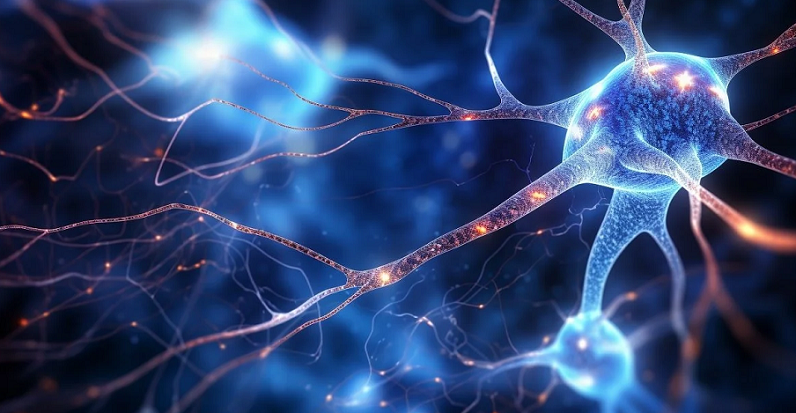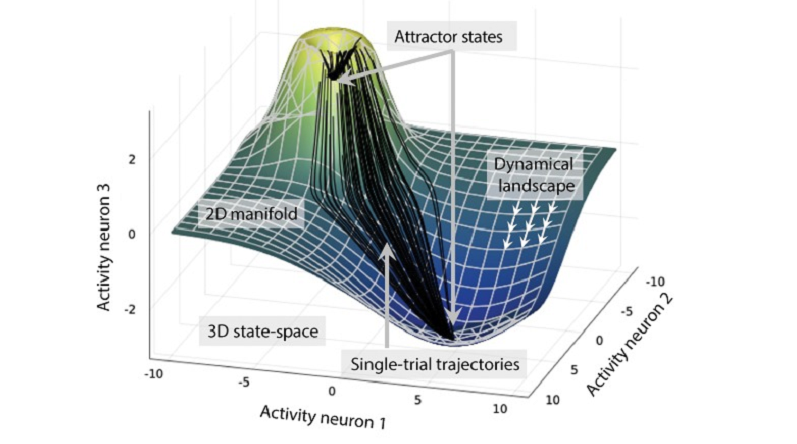
Imagine your brain as a magnificent symphony, each neuron an instrumentalist contributing to a larger, harmonious experience. Within this complex orchestra, brain waves act as the musical notes, shaping everything from your thoughts to your emotions. Most people think of these brain waves as collective activities, representing the output of thousands or even millions of neurons. But what if we told you that individual neurons, much like solo artists, have their own oscillations — tiny rhythms — that play a surprising role in composing the grand symphony of your mind?
Contents
- Brief Overview of Brain Waves
- Neurons: The Building Blocks of the Brain
- What Are Single-Neuron Oscillations?
- How Do Single-Neuron Oscillations Contribute to Brain Waves?
- References
Brief Overview of Brain Waves
Before we go deep into the intricate relationship between single-neuron oscillations and large-scale brain wave patterns, it’s essential to have a solid understanding of what brain waves are and why they matter. Just as understanding the basics of music theory can enhance your appreciation of a symphony, a foundational knowledge of brain waves will deepen your understanding of how individual neurons contribute to the mind’s magnificent orchestra.
What Are Brain Waves?
Brain waves are electrical patterns that occur in the brain as a result of its neurons firing in synchrony. These patterns can be measured using various techniques, the most common of which is electroencephalography (EEG). By placing electrodes on the scalp, EEG captures the electrical activity occurring within the brain and translates it into waveforms that researchers can study and interpret.
Definition of Brain Waves
At their core, brain waves are oscillations of electrical voltage in the brain, generated by the synchronized activity of neural populations. These oscillations occur at various frequencies and amplitudes, allowing researchers to categorize them into different types.
Brain Wave Measurement Through Electroencephalography (EEG)
Electroencephalography, commonly referred to as EEG, is the primary tool used to measure brain waves. By using a series of electrodes placed on the scalp, EEG records the electrical activity in the brain. This technique is non-invasive, making it widely used for both research and clinical purposes. The resulting data is often graphically represented as wave-like patterns, each corresponding to different brain states or activities [1].
Types of Brain Waves
The electrical symphony of the brain consists of several types of brain waves, each associated with different states of consciousness and cognitive functions. Understanding these types will set the stage for our discussion on how individual neurons contribute to these broader patterns.
Delta Waves
Delta waves are the slowest brain waves, typically oscillating between 0.5 and 4 Hz. They are most commonly observed during deep sleep and are essential for physical restoration and healing. Delta waves are often considered the “drummers” of the brain’s orchestra, setting the basic rhythm but usually staying in the background.
Theta Waves
Theta waves range from 4 to 8 Hz and are generally associated with drowsiness, daydreaming, and the early stages of sleep. They also play a role in creativity and intuition. Think of them as the string instruments of the brain, providing rich textures but often acting subtly.
Alpha Waves
With frequencies between 8 and 14 Hz, alpha waves are associated with relaxed alertness and calmness. They are most often observed when the eyes are closed but the mind is awake. Alpha waves can be thought of as the woodwinds of the brain’s orchestra, adding clarity and nuance to the overall performance.
Beta Waves
Ranging from 14 to 30 Hz, beta waves are the hallmark of an active, engaged mind. They are prevalent during tasks that require focused attention or analytical thinking. In musical terms, they are akin to the brass instruments, providing power and emphasis when needed.
Gamma Waves
The fastest of the brain waves, gamma waves oscillate at frequencies above 30 Hz. They are associated with higher cognitive functions like perception, problem-solving, and consciousness. In our symphonic metaphor, gamma waves are the virtuoso soloists, capable of rapid, complex performances that can captivate the audience.
Functions and Importance of Different Brain Waves
Understanding the different types of brain waves is crucial because each plays a unique role in various cognitive functions and states of consciousness. From the restorative nature of delta waves to the cognitive brilliance of gamma waves, each type contributes to our complex mental landscape in specific ways. As we proceed, keep these foundational concepts in mind. They will help us appreciate the surprising role that individual neurons and their oscillations play in this grand neural symphony [2].

Neurons: The Building Blocks of the Brain
Now that we have a foundational understanding of brain waves and their types, it’s time to explore the individual musicians of our neural symphony: neurons. These specialized cells are the fundamental units of the brain and nervous system. Understanding their structure and function is crucial for appreciating how single-neuron oscillations contribute to larger brain wave patterns.
Anatomy of a Neuron
A neuron is more than just a simple cell; it’s a highly specialized unit designed for transmitting information throughout the body’s neural network. Let’s take a closer look at the components that make up a neuron.
Cell Body (Soma)
The cell body, also known as the soma, serves as the neuron’s control center. It contains the nucleus and other essential cellular structures that facilitate the neuron’s overall functioning. You could liken the cell body to a conductor in our neural orchestra, overseeing all the activities that allow for the smooth operation of the neuron.
Dendrites
Dendrites are branch-like structures that emanate from the cell body. They receive signals from other neurons and funnel them toward the soma. In the context of our musical metaphor, think of dendrites as the receptive ears of the musicians, listening for cues from their neighbors to coordinate their play.
Axon
The axon is a long, slender projection that carries electrical impulses away from the cell body and towards other neurons, muscles, or glands. The axon serves as the messenger or, in musical terms, the melody that conveys the main message from one part of the orchestra to another.
How Neurons Communicate
With the anatomical components in place, let’s get into the fascinating process of neural communication, which relies on a delicate balance of electrical and chemical signaling.
Electrical Signaling
Neurons communicate through electrical impulses known as action potentials. An action potential travels down the axon and ultimately causes the release of neurotransmitters, which are chemicals that facilitate communication between neurons.
Chemical Signaling
Once an electrical impulse reaches the end of the axon, neurotransmitters are released into the synaptic cleft—the gap between adjacent neurons. These chemicals bind to receptor sites on the receiving neuron’s dendrites, initiating a new electrical signal in that neuron, thus completing the communication loop.
Significance of Neuronal Activity in Cognitive Functions
So why is understanding individual neurons important? Because the orchestrated activity of these cells is at the heart of all cognitive functions, from simple reflexes to complex thoughts and emotions. Whether you’re reading this sentence, remembering a childhood experience, or feeling the excitement of learning something new, neurons are working behind the scenes, communicating through intricate networks to make it all possible [3].
What Are Single-Neuron Oscillations?
Having introduced the basic architecture of neurons and their role in neural communication, we are ready to examine the concept of single-neuron oscillations. These oscillations, occurring within individual neurons, represent the microscopic fluctuations in electrical activity that collectively contribute to the more easily observed macroscopic brain waves we discussed earlier. In a sense, single-neuron oscillations are the soloists in our neural symphony, contributing subtle but essential melodies to the overall composition.
Definition of Single-Neuron Oscillations
So, what exactly are single-neuron oscillations? Simply put, they are rhythmic or repetitive patterns of electrical activity that occur within a single neuron. Unlike large-scale brain waves, which represent the synchronized activity of many neurons, these oscillations are localized phenomena, restricted to individual cells.
Frequency and Amplitude
Just like the larger-scale brain waves, single-neuron oscillations can vary in frequency and amplitude. This allows them to engage in different roles within the neural network, much like a musician who can play multiple instruments or shift between musical styles.
Synchronization and Phase Relationships
One of the most intriguing aspects of single-neuron oscillations is their ability to synchronize with other neurons. The term “phase relationship” refers to the relative timing of these oscillations among different neurons. When multiple neurons synchronize their oscillations, they can collectively give rise to larger-scale brain wave patterns.
The Mechanism Behind Single-Neuron Oscillations
Understanding how single-neuron oscillations occur requires a deeper look into the cellular mechanisms at play. Let’s get into the science of it all.
Ion Channels and Membrane Potential
The oscillatory behavior of a neuron is largely governed by ion channels in the neuron’s membrane. These channels control the flow of charged ions in and out of the cell, leading to fluctuations in the membrane potential—the electrical charge difference across the membrane.
Role of Neurotransmitters
In addition to ion channels, neurotransmitters also play a role in modulating the oscillatory behavior of neurons. By binding to specific receptors on the neuron’s membrane, neurotransmitters can either enhance or inhibit the neuron’s ability to produce oscillations [4].
Why Single-Neuron Oscillations Matter
You might be wondering, why do these tiny oscillations in individual neurons even matter? As it turns out, they serve several critical functions in the neural network:
Information Processing
Single-neuron oscillations are believed to play a role in the encoding and processing of information. They allow neurons to selectively interact with certain parts of the neural network, facilitating more efficient communication.
Cognitive States
Research suggests that these oscillations are linked to various cognitive states, such as attention, perception, and even consciousness. They act as key players in the orchestration of complex neural activities that enable our daily experiences.
Therapeutic Implications
Understanding single-neuron oscillations could pave the way for targeted therapies in treating neurological disorders. By manipulating these oscillations, it might be possible to adjust or correct dysfunctional neural circuits.
As we now know, single-neuron oscillations are far from just a side act in the grand symphony of brain activity. These small-scale oscillations have outsized importance, influencing the larger-scale brain waves that shape our thoughts, emotions, and perceptions.

How Do Single-Neuron Oscillations Contribute to Brain Waves?
We’ve learned about the larger framework of brain waves and have zoomed in to examine the intricacies of individual neurons and their oscillations. Now it’s time to connect these two scales of neural activity and explore how single-neuron oscillations contribute to the formation and modulation of brain waves. In our ongoing symphony metaphor, this is akin to understanding how individual musicians, each with their unique rhythms and melodies, come together to create a harmonious and coherent performance.
The Concept of Synchronization
One of the fundamental mechanisms by which single-neuron oscillations influence large-scale brain waves is through synchronization.
Definition of Synchronization
In a neural context, synchronization refers to the coordinated timing of activity among a group of neurons. When neurons synchronize their oscillations, the result is a more robust and detectable brain wave pattern.
Factors Influencing Synchronization
Several factors can influence the synchronization of single-neuron oscillations, including the strength and timing of the inputs they receive, the types of ion channels they possess, and even their physical proximity to other neurons. These factors can all affect whether a group of neurons will oscillate in synchrony or remain in a more disordered state [5].
The Role of Phase Locking
Another important concept to understand is phase locking, a specific form of synchronization.
What is Phase Locking?
Phase locking refers to the phenomenon where the oscillatory phase of one neuron becomes consistently related to the phase of another, creating a tight coupling between them. This form of synchronization is especially important when neurons need to transmit information in a precise and reliable manner.
Phase Locking in Cognitive Functions
Phase locking is believed to play a role in various cognitive functions, from sensory perception to memory encoding. It serves as the glue that binds different elements of a neural network together, enabling more complex processing and integration of information.
Generation of Different Brain Wave Types
The interaction and synchronization of single-neuron oscillations are not uniform; they can vary significantly, leading to the generation of different types of brain waves.
Role in Generating Delta, Theta, and Alpha Waves
For example, slower oscillations like delta and theta waves often result from the synchronized activity of neurons in deeper brain structures, while faster alpha waves are typically associated with synchronized activity in the cortex.
Role in Generating Beta and Gamma Waves
On the other end of the spectrum, beta and gamma waves are often generated through the fast, highly-coordinated oscillations of cortical neurons. These faster waves are thought to be essential for cognitive tasks that require attention, perception, and decision-making.
Implications for Brain Function and Health
Understanding how single-neuron oscillations contribute to brain waves has significant implications for both neuroscience and medicine.
Cognitive and Psychological Insights
The study of these interactions can provide deeper insights into the neural basis of cognition, emotion, and behavior, allowing us to better understand the complexities of the human mind.
Therapeutic Applications
Moreover, this knowledge could lead to the development of new therapies for neurological and psychiatric disorders. By targeting single-neuron oscillations, it might be possible to influence larger brain wave patterns and, in turn, alleviate symptoms or improve cognitive function.
References
[1] Brain Oscillations Control Timing of Single-Neuron Activity in Humans
[2] Bridging Single Neuron Dynamics to Global Brain States
[3] Neural oscillations are a start toward understanding brain activity rather than the end
[4] Riding the (brain) waves! Using neural oscillations to inform bilingualism research
[5] Single-neuron firing cascades underlie global spontaneous brain events

